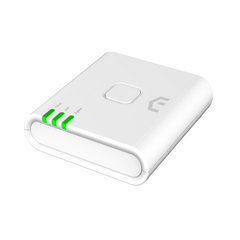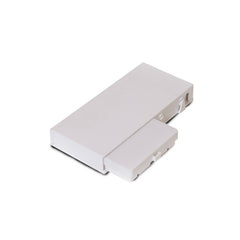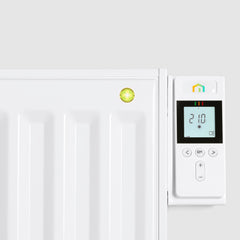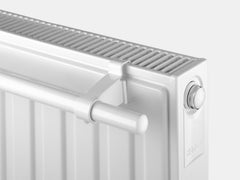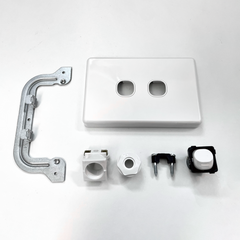As seen in





What makes our electric heating the best for your home?
Luxurious radiant heaters for superior comfort. Our electric heaters warm objects directly, not just the air.
Easy installation with electric panels. Wall-mounted panels take less than 30 minutes to install by an electrician or handyman.
No hydronic hassle. Enjoy the benefits of radiant heat without the complexities of a hydronic heat pump system.
Completely silent operation. No ticking, popping or crackling noises, or the sound of reverse cycle air. Just silent electric heaters.
Maintenance-free electric heating. Purmo electric heaters are entirely maintenance-free, unlike hydronic heating or heat pump systems.
Highly accurate thermostat. Maintain room temperature within 0.1 degrees for optimal comfort and energy efficiency.
Great for bathrooms and drying cupboards. IP44 splash rating ensures safety and functionality in moisture-prone areas.
Family friendly with safety features. Child safety modes limit surface temperature while providing radiant heat.
Energy saving features for cost-efficient heating. Open window detection and built-in timers help cut heating costs.
Versatile electric heating options. No need to run pipes throughout your house to a central hydronic boiler, simplifying your electric heating set-up.
Healthier indoor environment with enclosed elements. A fully enclosed element doesn't burn dust or allergens like cheaper convection panel heaters, or pollute like a gas heater.
Premium cold-rolled steel construction. Backed by a 10-year panel warranty and two-year electrical warranty for reliability.
Elegant European design. Choose from the classic European appeal of our Yali Plus models or the sleek, minimalist design of Parada Plus electric heaters.
Various sizes for different rooms. Find the perfect electric heater for living rooms, bedrooms, and bathrooms alike.
Efficient electric heating solutions. Our designs prioritise efficiency, ensuring warmth without excessive energy use.
Smart Home Integration. Select models feature advanced smart home compatibility for seamless integration into your lifestyle.
Shop our electric heating range today
Discover the perfect electric heating solution for your home. Our collection promises not only warmth and comfort but also a touch of modern elegance and efficiency. Explore our range and find the ideal electric heating product that meets your needs and aesthetic preferences.
Exploring different types of electric heating, including reverse cycle air
Electric radiant heaters
Electric radiant heaters, like the Yali Plus and Parada Plus models, emit infrared radiation, directly warming objects and people without heating the air like convection heaters. This method ensures efficient, targeted heating.
Infrared heaters
Radiant heaters and infrared heaters are closely related, but they are not exactly the same thing. Infrared heaters typically use infrared heating elements, such as quartz tubes or ceramic plates, which generate infrared radiation when heated. Similar to radiant heaters, they warm up objects and surfaces in their path.
Electric convection heaters
Mounted on walls, electric convection heaters use convection to circulate warm air, heating the entire space, rather than objects or people like radiant heaters.
Heat pump technology including reverse cycle air conditioners
A split system or reverse cycle air conditioner extracts heat from the outside air or ground and transfers it indoors, offering both heating and cooling.
Hydronic heating systems
Hydronic heating can be powered by gas or electricity, depending on the setup. In an electric system, a heat pump or boiler is used for heating water, which is then circulated through pipes to wall radiators or in slab heating systems.
Portable electric heater
Portable heater types include convection panel heaters with an electric heating element and oil-filled column heaters which circulate oil. An oil column heater might use some radiant technology; however, the main heating source is convection.
Comparing Purmo electric radiators to hydronic heaters
Purmo electric radiators offer an efficient alternative to traditional hydronic heating systems and their gas boilers, and a quieter option than other electric systems like reverse cycle air.
Let’s break down the differences:
Installation costs
Compared to hydronic systems, installing Purmo electric radiators is straightforward. There's no need for piping all over or a big central boiler—it’s just an easier installation, especially in places where retrofitting might be hard.
Energy source
Our electric radiators use electricity as their power source. They don’t require a separate boiler or heat source to heat water, which means no gas connections or gas heaters.
Energy efficiency
When it comes to efficiency, electric heating like the Yali Plus and Parada Plus can be very efficient. Factors like insulation, room size, and how you use them might influence efficiency. Hydronic heaters are excellent at retaining heat but often rely on gas, unlike clean solar power in solar-installed setups or reverse cycle air systems.
Control and zoning
Our electric radiators are all about precision and zoning. You can control them individually or set up custom programs for each room or zone, offering more flexibility than traditional hydronic heating.
Maintenance and repairs
Looking after our electric radiators is usually simpler than hydronic heating. No pipes to fuss over or boiler systems to service, which means fewer headaches and lower maintenance costs.
Environmental impact
The environmental impact varies between electric heating and hydronic heating. Electric systems, like Purmo radiators, can be more eco-friendly by using solar electricity at home.
On the other hand, hydronic systems, while efficient, might use fossil fuels for water heating, possibly adding to greenhouse gas emissions. It's all about making those green choices.
In the end, choosing between Purmo electric radiators and hydronic heating depends on what suits you best: installation ease, your heating style, energy efficiency goals, and what your space needs. Make sure you find the perfect fit for cosy, energy-efficient warmth and functionality.
What is the most efficient type of electric heating?
When it comes to considering the environmental impact of heating systems, home efficiency is key. Enhancing home efficiency by insulating, sealing drafts and using energy-efficient appliances significantly reduces energy consumption, ultimately reducing the environmental footprint of heating systems.
Reverse cycle air conditioners are an efficient heating and cooling option. These systems work by transferring heat between the indoor unit and outdoor units using refrigerant. Their strength lies in moving heat rather than generating it, consuming far less energy than traditional electric resistance heaters, gas heaters and portable electric heaters.
Radiant panel heaters stand out as efficient space heating options. Their efficiency is driven by their heating technology, which uses electric radiant heat. A radiant heater warms objects and individuals directly without heating the entire room, providing targeted warmth, especially in wall-mounted setups.
Radiant panel heaters, with their direct heat, prove more energy-efficient than some traditional heating methods, offering localised heating and minimising energy waste.
Understanding the efficiency of heating systems—from radiant panel heaters to split systems—helps in making informed choices for environmentally friendly and cost-effective home heating solutions.
What is the cheapest electric heater to run?
The cheapest electric heater to run often starts with an energy-efficient home.
When your home is already well-insulated and sealed against drafts, the overall demand for heating decreases, making any electric heater more cost-effective to run.
A heater’s extra features can really shave off running costs. Smart technology in electric heaters allows for precise control over heating schedules and temperatures. These smart features can adapt based on your habits, adjusting heating levels efficiently, so you're not overheating spaces when you don't need to.
Precision thermostats, commonly seen in radiant heaters like the Yali Plus or Parada Plus, also play a pivotal role. These thermostats maintain a consistent temperature by cycling the heater on and off, only using energy when necessary.
When paired with features like timers, they ensure that you're only heating the spaces you're using at the times you need them. This personalised control over your heating ensures you're not wasting a single unit of energy.
The cheapest electric heater to run is the one that integrates with your home's efficiency. With smart tech and precision thermostats, you can fine-tune your heating, ensuring you're using energy precisely when and where you need it, ultimately keeping those running costs down.
How can I optimise energy efficiency when using electric heating?
When it comes to getting the most out of your electric heaters—whether they're portable, wall-mounted, or even reverse cycle air conditioners—there are some ways to increase energy efficiency without sacrificing warmth.
First off, ensure your home is insulated and sealed up against drafts. This helps all types of heaters, even gas ones, to work more efficiently and keep the warmth in.
Smart thermostats are a game-changer. They let you tweak temperatures and are especially handy with wall-mounted radiant heaters, giving you precision control without wasting energy.
Zoning allows you to heat only where you need it, and is a benefit of electric radiant heaters. Instead of warming up the whole house, focus on the spots you're living or working in.
Lastly, use natural warmth when you can. Let sunlight in during the day, then close curtains at night to keep the warmth in. Adjusting heating schedules based on your routine is another smart move in winter.
By using these tips you'll not only stay snug but also reduce energy bills.
What are the installation requirements for our wall mounted electric heating systems?
Installation of Purmo radiators is extremely simple.
Two brackets are screwed to your wall, and the panel simply clips on. It typically takes around 20 minutes per panel.
Provided there's a power point nearby, this makes DIY installation a breeze! Electric heaters like these are perfect for quick and easy setup.
If you want the clean appearance of a hardwired installation, you'll need to arrange an electrician to wire up the included wall boxes directly before installing the panels.
It's also a good idea to engage an electrician if you have an older switchboard. This ensures you won't overload any of your circuits by the amperage draw of the panels.
For Victorian customers, we can offer our installation service directly. This includes mounting of the brackets and panels, but it does not include hardwiring or anything that requires a licensed electrician.
For interstate customers, we're happy to assist your electrician to make sure the panels are installed directly.
How environmentally friendly are electric heaters compared to other heating options?
Electric heating systems, including electric radiator panel heaters, have an environmentally-friendly advantage, due to their compatibility with renewable energy sources like solar power.
One key advantage of electric radiators is their efficiency when powered by solar energy, making them a preferred choice for eco-conscious homeowners.
Running on solar power minimises their environmental impact, setting them apart from gas heating systems, especially gas hydronic systems heavily reliant on non-renewable natural gas.
Using solar power to run electric heaters aligns well with sustainable living practices, allowing homeowners to decrease reliance on conventional energy sources. This significantly reduces the carbon footprint associated with heating, an area where gas furnace, gas ducted heating, and hydronic systems can fall short due to their dependence on fossil fuels.
Operating electric radiator panel heaters with renewable energy sources like solar power, makes them better for the environment than gas heating systems, especially gas hydronic systems.
Why should I move away from gas heating?
Switching from gas heating to all-electric systems offers benefits for both homeowners and the environment.
Gas heating systems pose safety risks, emit pollutants, and contribute to greenhouse gas emissions, impacting indoor air quality and the environment.
Unflued gas heaters are being phased out in most states because they release combustion by-products directly into indoor air, potentially causing health issues, especially if the space isn't ventilated.
While gas ducted systems offer efficient whole-house heating, they still rely on burning fossil fuels, contributing to carbon emissions and indoor air pollution.
Electric heating options, such as heat pumps and electric radiant systems, provide cleaner, safer, and more environmentally friendly heating solutions than gas heating systems, especially if you have rooftop solar.
Moving to electric heating like a heat pump system or a radiant heater requires an upfront investment and professional installation but is worth it for the long-term benefits including comfort, safety, and sustainability.
Can a radiant heater be controlled individually for different zones or rooms?
Absolutely! Our radiators can be connected to our Touch E3 Wi-Fi controller. It will allow you to control all the units from a central panel, set-up zones and monitor your energy usage.
The Touch E3 connects to each radiator via a dedicated radio channel. If you want, you can then connect the Touch E3 to your home WiFi, which will allow you to control your entire heating system remotely via smartphone or PC.
We have a set-up service for Victorian customers, or we can supply a configuration guide.
Are there special features that I should consider?
Definitely. The quality of the thermostat can be a big deal for energy consumption. A quality thermostat can fine tune the duty cycle of the heater, which is how often your heater kicks into action.
It affects how much your system spends actively warming things up, or pausing to maintain the perfect temperature. If the thermostat is inaccurate, it can cause the heater to run longer than it should or to shut off too early. This wastes energy and causes higher energy bills.
Thermostats vary widely in accuracy and precision, affecting how much energy a heater uses. Heaters with advanced digital thermostats, like the Thermo Plus Series, can hold room temperatures within a mere 0.1 degrees of the set temperature. This stops your heater from switching on-off all the time, which drains efficiency and costs more to run.
Cheaper, bimetal thermostats can allow the temperature to swing by 4 to 5 degrees, making the heater work harder. That’s why precision is everything when it comes to thermostats.
Special features
Our range has several other features for reduced energy use and increased safety:
-
An over-temperature cutout system kicks in if the radiator is covered and excessive heat builds up. This will automatically reset the heater when the problem is removed.
-
If for some reason the temperature exceeds a preset limit, the element has an over-temperature fuse that will open. A new element is required in this instance, but this is designed to prevent fires.
-
Our radiators have an open window function enabled. If they detect a large drop in temperature, or difficulty maintaining consistent heat, they will assume a window (or door to a much colder room) has been left open and will switch off automatically.
-
Our radiators and towel rails can be connected to our Touch E3 Wi-Fi controller. It will allow you to control all the units from a central panel, set-up zones and monitor your energy usage.
What you can expect from us
Get a Quote and Heating Plan Online
CHOOSE WHICH OPTION IS RIGHT FOR YOU

Expert Heating Plan
Ideal for Multiple Rooms or Whole Home
Our expert estimators will run the numbers and calculate your precise heating needs.

Instant Online Estimate
Perfect for 1 to 2 Rooms
Our calculator quickly estimates the panels you need to heat a room.
Five-star service that won’t leave out in the cold
October 2023
May 2024
October 2023
September 2023
March 2024
September 2023
September 2023

June 2024
February 2024

March 2024
September 2023
September 2023
June 2024
September 2023
September 2023
September 2023
December 2023
October 2023
September 2023
May 2024
October 2023
January 2024

Premium Electric Heating Solutions
Discover the epitome of warmth and comfort with our range of electric heating solutions. At Thermosoft Australia, we bring you a curated selection of high-quality European electric radiators and towel rails, designed to provide true radiant heat without the hassle of hydronic systems.
Our products, including the luxurious Purmo radiators and stylish Finimetal towel rails, embody a blend of elegance, efficiency, and modern technology. Whether you are looking to warm up your cozy abode during the chilly winters or seeking a touch of modernity with smart home functionalities, our electric heating range caters to diverse needs while ensuring a blend of style, luxury, and functionality

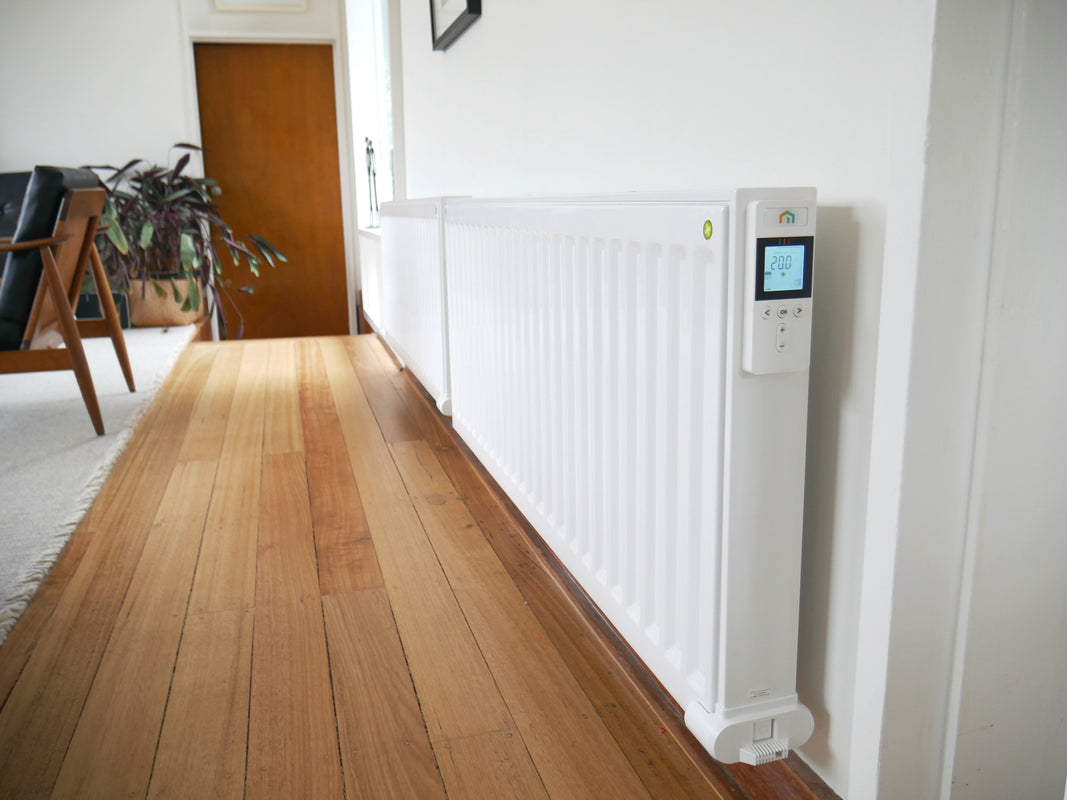



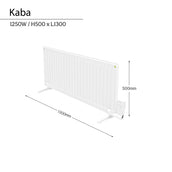 H500 x L1300
H500 x L1300


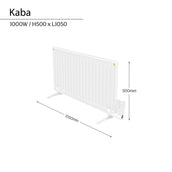 H500 x L1050
H500 x L1050

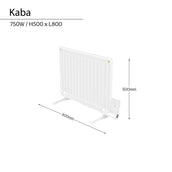 H500 x L800
H500 x L800

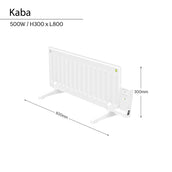 H300 x L800
H300 x L800


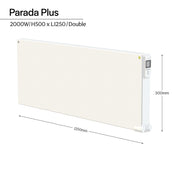 H500 x L1250
H500 x L1250
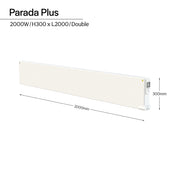 H300 x L2000
H300 x L2000

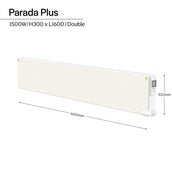 H300 x L1600
H300 x L1600
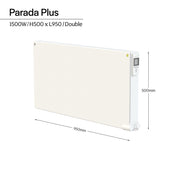 H500 x L950
H500 x L950

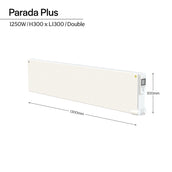 H300 x L1300
H300 x L1300
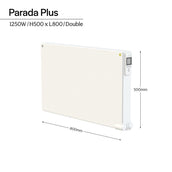 H500 x L800
H500 x L800
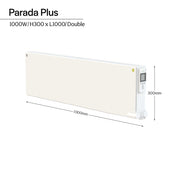 H300 x L1000
H300 x L1000
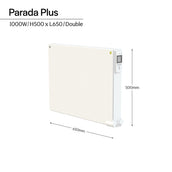 H500 x L650
H500 x L650
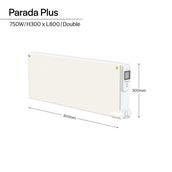 H300 x L800
H300 x L800
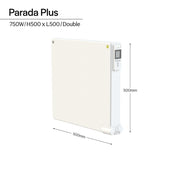 H500 x L500
H500 x L500

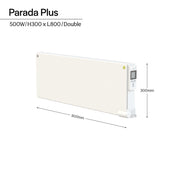 H300 x L800
H300 x L800
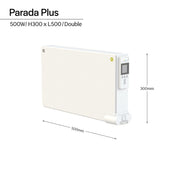 H300 x L500
H300 x L500
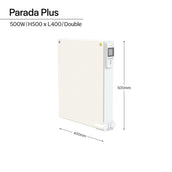 H500 x L400
H500 x L400


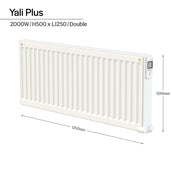 H500 x L1250
H500 x L1250
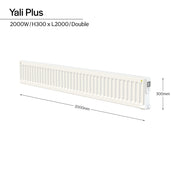 H300 x L2000
H300 x L2000

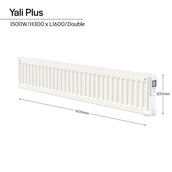 H300 x L1600
H300 x L1600
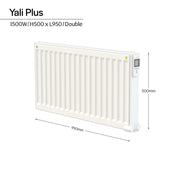 H500 x L950
H500 x L950

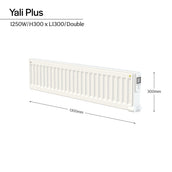 H300 x L1300
H300 x L1300
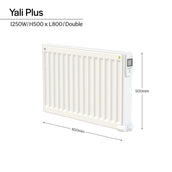 H500 x L800
H500 x L800

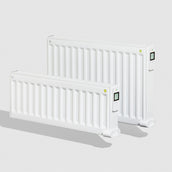 H300 x L1500
H300 x L1500
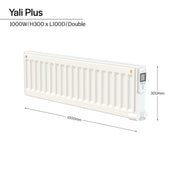 H300 x L1000
H300 x L1000
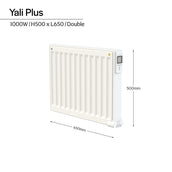 H500 x L650
H500 x L650
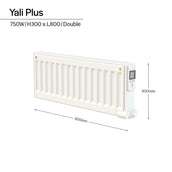 H300 x L800
H300 x L800
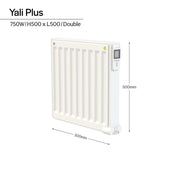 H500 x L500
H500 x L500

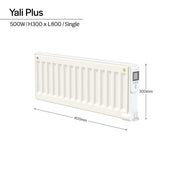 H300 x L800
H300 x L800
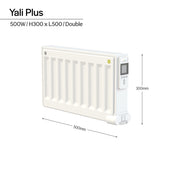 H300 x L500
H300 x L500
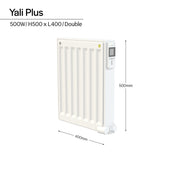 H500 x L400
H500 x L400

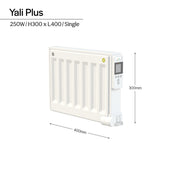 H300 x L400
H300 x L400
